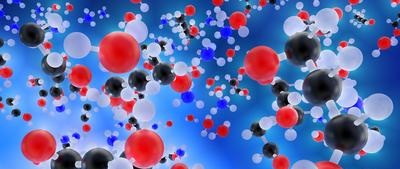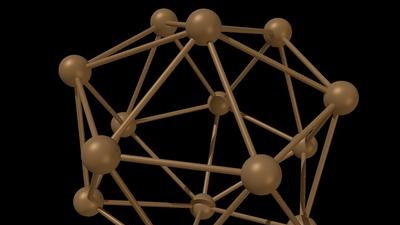|
 In 1861, an outstanding event happened - a sugar-like substance was first created in a chemist's test tube! In 1861, an outstanding event happened - a sugar-like substance was first created in a chemist's test tube!
Needless to say about the significance of this event? The Earth's population doubles every 60-100 years. He needs more and more food. For this, new lands are plowed up, fishing is being improved, and so on. And then Butlerov got sugar by treating formaldehyde with lime water. Why continue cultivating sugar cane and sugar beet plantations? Food - first sugar, then proteins - can be created artificially!
But if you now look for artificial food, you will not find it, although a century has passed since the synthesis of sugar. Chemists got confused cards ... However, let's not get ahead of ourselves.
 In mathematics, two is always two, but in organic chemistry, two molecules composed of the same atoms, in the same order, are not necessarily equivalent to each other. And the "culprit" of this is the spatial structure of molecules. In mathematics, two is always two, but in organic chemistry, two molecules composed of the same atoms, in the same order, are not necessarily equivalent to each other. And the "culprit" of this is the spatial structure of molecules.
What it is? You have five fingers on both hands. Their order is the same. But try, having mixed up the gloves, put the left one on the right hand. The spatial structure is what distinguishes left from right.
Polymer molecules - these giant chains of individual units of small molecules called monomers - are strictly oriented in space relative to each other and in this respect are like gloves. Some of these molecules give out their spatial characteristics in that some of them, when rotated, rotate the polarized beam of light to the right, while others - to the left. The body of animals and humans consists only of levorotatory protein molecules. Dextrorotatory molecules are simply not absorbed by the body. They are "not edible" for him. And since synthetic products are a mixture of right- and levorotatory molecules, then ...
It turns out that it is not enough to get the required substance. It is also necessary to dispose of the architecture of each molecule. So that each group of atoms in a molecule occupies a strictly defined place in space. And if this rule is not followed even when creating technical polymer materials, then the results are disappointing.
So, for example, there is polystyrene and polystyrene. Polystyrene, from which many household items are now made, is amorphous. Its molecular structure is like an impenetrable thicket, where stems, branches, roots are mixed up in a mess.
 But if the polystyrene molecules were oriented in space, arranged in a strict order, like plants sown in a square-nested way, then such polystyrene would be very little like its “unorganized” namesake. If amorphous polystyrene has a melting point of 80 degrees, then "organized" polystyrene (molecules of such a substance are called stereoregular) - 240 degrees. Difference! In addition, the stereoregular polymer is twice as strong. But if the polystyrene molecules were oriented in space, arranged in a strict order, like plants sown in a square-nested way, then such polystyrene would be very little like its “unorganized” namesake. If amorphous polystyrene has a melting point of 80 degrees, then "organized" polystyrene (molecules of such a substance are called stereoregular) - 240 degrees. Difference! In addition, the stereoregular polymer is twice as strong.
It is easy to imagine what a leap the national economy would make if the factories produced only stereo-regular polymers! And how much the chances of replacing natural products would increase with synthetic products!
But a molecule is not a house, and a substance is not a city that you can build as you like. It's hard to imagine a "scaffolding" for each of the many trillions of molecules.
This is why all attempts to obtain pure stereoregular polymers have not been very encouraging. In the best case, with the help of special catalysts, it was possible to obtain mixtures in which eighty percent of the molecules were oriented, and twenty were in disorder. These "disorganized" molecules immediately degraded the quality of the material.
It was clear that the materials of the future could not be obtained using the old methods; new ways had to be sought.And at one time in the laboratory of the Research Institute of Petrochemical Synthesis of the USSR Academy of Sciences they found one of the ways to this.
Here they managed to build "scaffolding" for the assembly of stereoregular polymer molecules. But this molecule itself cannot be seen even in an electron microscope.
The "scaffolding" turned out to be molecules of another substance - urea.
Simplifying somewhat, we can say that the urea molecule has the shape of a square. During crystallization of pure urea, the squares are connected in pairs, forming a rhombus.
But, interacting with a hydrocarbon (which is a monomer), urea molecules combine not in two, but in three. A hexagon is formed, which "captures" the monomer molecule.
 Like larvae in a honeycomb, monomer molecules now lie in urea crystals. They are located inside the crystal lattice in a strict order, occupy a certain position in space. If we now "cross-link" the monomers with each other, that is, link them with a chemical bond, then the stereoregular polymer is ready ... Like larvae in a honeycomb, monomer molecules now lie in urea crystals. They are located inside the crystal lattice in a strict order, occupy a certain position in space. If we now "cross-link" the monomers with each other, that is, link them with a chemical bond, then the stereoregular polymer is ready ...
The "crosslinking" of monomers is done by irradiation. Microparticles of radiation excite monomer larvae, make them seem to hold hands. Irradiation polymerization can be done in seconds, while with catalysts it can take hours. It can be conducted in any volume of matter, as long as the power of the emitter is sufficient.
Good metal scaffolding after the end of construction is dismantled and taken to new construction. So it is here. When the polymerization is complete, the urea is dissolved in water and a pure polymer is obtained, and the urea can again be fully used for the same process.
On the crystal lattice of urea, however, only monomers can polymerize, which are placed inside the channel formed by the hexagons of its molecules. But not only urea can interact with hydrocarbons in this way. Now scientists are looking for substances that, crystallizing, form channels of a different size and shape, and which, therefore, could serve as "scaffolding" for a variety of polymeric substances.
Molecules with a given architecture ... Substances that are built according to a blueprint ... This is a huge step forward in chemistry.
Gavrilova N.V.
|
 In 1861, an outstanding event happened - a sugar-like substance was first created in a chemist's test tube!
In 1861, an outstanding event happened - a sugar-like substance was first created in a chemist's test tube! In mathematics, two is always two, but in organic chemistry, two molecules composed of the same atoms, in the same order, are not necessarily equivalent to each other. And the "culprit" of this is the spatial structure of molecules.
In mathematics, two is always two, but in organic chemistry, two molecules composed of the same atoms, in the same order, are not necessarily equivalent to each other. And the "culprit" of this is the spatial structure of molecules. But if the polystyrene molecules were oriented in space, arranged in a strict order, like plants sown in a square-nested way, then such polystyrene would be very little like its “unorganized” namesake. If amorphous polystyrene has a melting point of 80 degrees, then "organized" polystyrene (molecules of such a substance are called stereoregular) - 240 degrees. Difference! In addition, the stereoregular polymer is twice as strong.
But if the polystyrene molecules were oriented in space, arranged in a strict order, like plants sown in a square-nested way, then such polystyrene would be very little like its “unorganized” namesake. If amorphous polystyrene has a melting point of 80 degrees, then "organized" polystyrene (molecules of such a substance are called stereoregular) - 240 degrees. Difference! In addition, the stereoregular polymer is twice as strong. Like larvae in a honeycomb, monomer molecules now lie in urea crystals. They are located inside the crystal lattice in a strict order, occupy a certain position in space. If we now "cross-link" the monomers with each other, that is, link them with a chemical bond, then the stereoregular polymer is ready ...
Like larvae in a honeycomb, monomer molecules now lie in urea crystals. They are located inside the crystal lattice in a strict order, occupy a certain position in space. If we now "cross-link" the monomers with each other, that is, link them with a chemical bond, then the stereoregular polymer is ready ...









